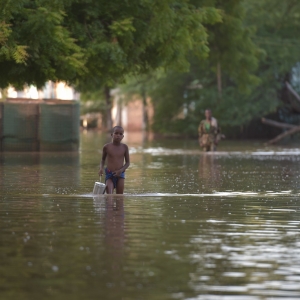Federal Water Tap, November 11: State Department Notes Mekong River Tensions
The Rundown
The EPA proposes waivers to extend coal ash compliance deadlines. The CDC tallies a large increase in Legionnaires’ disease cases last year. A State Department report on the Indo-Pacific region highlights tensions in the Mekong River basin. The EPA selects five PFAS chemicals for a toxicity assessment. The Interior Department develops a permanent water contract for a big California irrigation district. NOAA reviews the severe algal bloom in Lake Erie this summer. The Army Corps flags a risky dam in southern California. The House passes a bill to ban new mining claims around the Grand Canyon, while Sen. Jim Inhofe continues to lobby for a “skinny” Defense Department spending authorization bill without PFAS provisions. The Supreme Court hears a Clean Water Act case. And lastly, the Trump administration begins the year-long process of withdrawing from the Paris climate agreement.
“The Mekong region of Cambodia, Laos, Burma, Thailand, and Vietnam is strategically important to the United States. This region is facing new challenges that put autonomy and economic independence at risk, including debt dependency, a spree of dam-building that concentrates control over downstream flows, plans to blast and dredge riverbeds, extraterritorial river patrols, increasing organized crime and trafficking, and a push by some to mold new rules to govern the river in ways that undermine existing institutions.” — Excerpt from a State Department report on its strategy in the Indo-Pacific region. Large hydropower dams on the upper Mekong — first in China and now in other basin countries — are a threat to river flows and fisheries that downstream communities rely on.
By the Numbers
9,933: Cases of Legionnaires’ disease and Pontiac fever reported in the United States in 2018, a 33 percent increase from the previous year. (CDC)
In context: As Legionnaires’ Disease Cases Surge, Lawsuits Pile Up
5: PFAS chemicals that will undergo a toxicity review. Comments on the methods for conducting the reviews are being accepted through December 23. (Environmental Protection Agency)
News Briefs
EPA Proposes Coal Ash Rules Revision
In response to court orders, the EPA proposes to revise Obama-era rules that guide how electric power utilities manage the toxic byproducts of burning coal.
Because the proposal extends some compliance deadlines for halting storage of waste in unlined pits, the agency views it as “a cost savings rule.”
The agency proposes that unlined pits stop receiving waste by August 31, 2020, two months sooner than the earlier version of the rule.
However, the agency says that some utilities will not be able to comply with that deadline because they do not have another storage site available. The rule lays out pathways for utilities to extend their compliance deadline until October 2023.
“The EPA cannot impose more protective measures than can be technically feasibly implemented, as the law cannot compel the impossible,” the agency argues in a Federal Register notice.
Clean Water Act in the Supreme Court
Justices at the nation’s highest court tussled with the nuances of water pollution in a November 6 hearing over the scope of the Clean Water Act.
Reuters reports that the justices seemed to seek a balance between clear definitions, environmental protection, and legal protection for private citizens for things like septic tanks.
The case stems from contradictory rulings in federal appeals courts over whether pollution of groundwater that reaches surface waters requires a Clean Water Act permit.
In context: Maui Mayor Rejects Clean Water Act Settlement, Aims for Supreme Court Hearing
Will Defense Bill Move Ahead Minus PFAS Provisions?
Sen. Jim Inhofe (R-OK) continued to lobby for a “skinny” Defense Department spending authorization bill that cuts out scrutinized provisions regarding toxic “forever” chemicals.
“It concerns me we’re not making more progress on some of the most controversial riders,” Inhofe said on the Senate floor last week.
The House and Senate versions of the bill take different positions on how to treat PFAS chemicals in the federal regulatory system.
Water Supply Contract for California Irrigation District
The Interior Department is developing a permanent water supply contract for Westlands Water District, one of the nation’s largest providers of irrigation water.
The water comes from the Central Valley Project, a federal network of dams and canals. Permanent contracts allow contract holders a guaranteed share of the water that is available each year. That guarantee is an enticing feature in a region with such variable water supply.
Congress passed a law in 2016 that made permanent contracts possible. David Bernhardt, the current Interior secretary, lobbied for that bill for Westlands.
The Associated Press reports that environmental groups are worried that a permanent contract reduces bargaining power for alternative uses of the water.
Grand Canyon Protection Bill Passes House
The House approved a bill that withdraws from new mining claims and leases more than one million acres of land adjacent to Grand Canyon National Park. Of biggest concern to the bill’s backers is the potential for uranium mining to degrade the Colorado River.
A 20-year moratorium on new claims in the areas was put in place in 2012.
The bill was not well received by the Trump administration. In a policy statement, the White House said that withdrawing such a large tract of land from mineral leasing is incompatible with administration goals for mineral development on federally managed lands, and is a geopolitical risk. The president’s advisors will recommend that he veto the bill.
Studies and Reports
Legionnaires’ Disease Cases Soar Again, Set New Record
America’s deadliest waterborne disease is becoming more pronounced.
The number of reported cases of legionellosis, an umbrella term for two illnesses caused by Legionella bacteria, climbed by 33 percent last year, to 9,933 cases, according to data released this week by the Centers for Disease Control and Prevention. The number of reported cases in 2017 was 7,458.
The milder of the two ailments caused by the bacteria is Pontiac fever, which is akin to the flu. The vast majority of the cases, however, are Legionnaires’ disease, a severe respiratory illness that resembles pneumonia and kills about one in 11 people it infects.
Just over half of the cases occurred in only eight states in the mid-Atlantic and Great Lakes, regions that have the highest rates of infection in the country. Those states are Illinois, Indiana, Michigan, New Jersey, New York, Ohio, Pennsylvania, and Wisconsin.
Ohio reported twice the number of cases as California (930 to 453), even though Ohio’s population is roughly a quarter that of California.
Read more about the data on Circle of Blue.
Lake Erie Algal Bloom Recap
As forecasted earlier this year, the annual Lake Erie algal bloom this summer was severe, according to a National Oceanic and Atmospheric Administration review.
The bloom, fueled by phosphorus inflows, is mostly compromised of tiny organisms called cyanobacteria. It rated a 7.3 on a 10-point “severity index,” which measures the mass of cyanobacteria during its peak period.
As in most years, the bloom reached its peak at the beginning of August. Strong winds dispersed the bright green muck by September.
Army Corps Identifies Deficiency at California Dam
After a structural assessment, the Army Corps of Engineers changed the risk description of Mojave Dam to “urgent,” claiming that the dam could fail in a severe flood.
The dam is located in San Bernardino County, northeast of Los Angeles. The Army Corps said that the dam could be breached if waters spilled over its crest. In the event of a breach, the resulting flood could threaten 16,000 people downstream.
“The dam has never experienced spillway flow or a flood event that has loaded the dam significantly,” Aaron Barta, commander of the Army Corps’ Los Angeles District, said in a statement. “This is a storm that is unlikely to occur, but it is nonetheless a real possibility and one we must be prepared for.”
On the Radar
Paris Agreement Withdrawal
The Trump administration gave notice to the United Nations that it will begin the year-long process of withdrawing the United States from the Paris climate agreement.
Secretary of State Mike Pompeo said in a statement that the agreement resulted in an “unfair economic burden imposed on American workers, businesses, and taxpayers by U.S. pledges.”
The withdrawal becomes official on November 4, 2020.
Congressional Hearing
On November 13, the Senate Committee on Commerce, Science, and Transportation will consider nearly two dozen pieces of legislation, including bills regarding harmful algal blooms, fisheries, and PFAS chemicals in firefighting equipment.
Federal Water Tap is a weekly digest spotting trends in U.S. government water policy. To get more water news, follow Circle of Blue on Twitter and sign up for our newsletter.
Brett writes about agriculture, energy, infrastructure, and the politics and economics of water in the United States. He also writes the Federal Water Tap, Circle of Blue’s weekly digest of U.S. government water news. He is the winner of two Society of Environmental Journalists reporting awards, one of the top honors in American environmental journalism: first place for explanatory reporting for a series on septic system pollution in the United States(2016) and third place for beat reporting in a small market (2014). He received the Sierra Club’s Distinguished Service Award in 2018. Brett lives in Seattle, where he hikes the mountains and bakes pies. Contact Brett Walton






Leave a Reply
Want to join the discussion?Feel free to contribute!